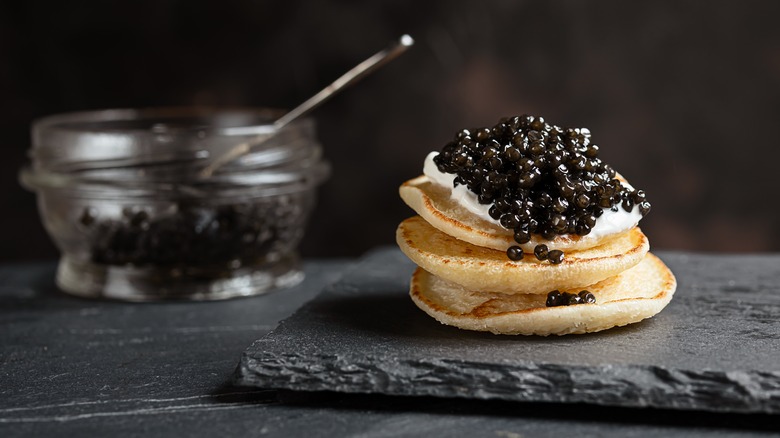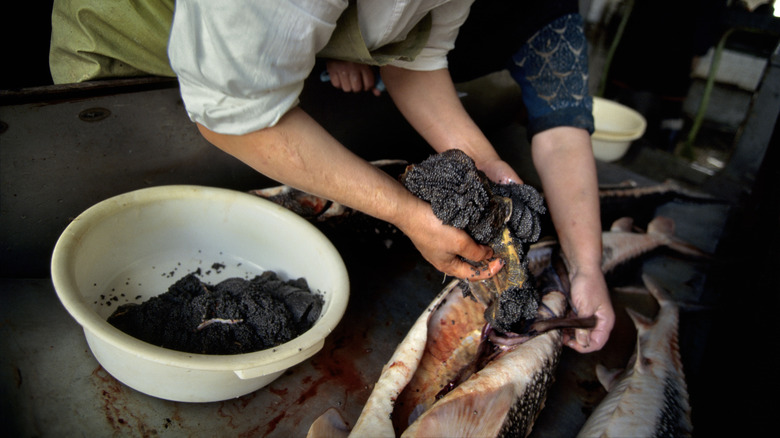Ever Wonder How Caviar Is Harvested? Us Too
Caviar is perhaps one of the most enigmatic delicacies in the world. A lot of it may have to do with the opulence and exclusivity that limits caviar to the affluent few, but another reason may be the ambiguity around how caviar is harvested and produced.
Sure, calling it fish eggs makes things simple enough to understand, but harvesting caviar is a far more complex process. In reality, only the eggs from the sturgeon family of fish can be called caviar. To produce caviar, the egg sacks are first extracted from a sturgeon. Then, harvesters use a stainless steel net to separate the eggs from the membrane. After that, the eggs must be closely examined for any leftover membrane as well as for any substances that don't belong in a gleaming tin of caviar. The sturgeon eggs are then rinsed, measured, graded for quality, salted, and packaged to be shipped off.
Unlike hens that lay eggs as frequently as every day, it can take sturgeons 10 years to begin producing eggs that are ready for harvest which, coupled with overfishing and the threat of extinction, is a huge factor in caviar's rarity and its top-dollar price tag. Once the surgeons do reach that stage, there are two ways for their egg sacks to be harvested. One way is to induce a sturgeon into delivering the eggs through natural birth or a C-section. The more popular and traditional method, however, is killing the sturgeon to get to its egg sack.
The danger of harvesting caviar through traditional methods
Although the no-kill method of harvesting caviar is more sustainable, it's also more complex, time-consuming, and costly, according to Caviar Star. The calcium baths and hormones used to induce natural birth have an effect on the caviar that is ultimately harvested from a sturgeon, making its texture firmer than is desired. Meanwhile, C-sections can often cause infections amongst the sturgeons as well as infertility, making the chances of harvesting caviar from them in the future bleak. This is why caviar producers prefer the traditional method that involves killing a sturgeon in the process.
The consequence of this harvesting method combined with overfishing has led The International Union for Conservation of Nature to place 27 species of sturgeons on their red list of threatened species. In fact, the danger of sturgeon extinction was so critical that the U.S. imposed a 15-year ban on the import of Beluga caviar that was lifted only recently in 2021.
To make caviar harvesting more sustainable, more and more producers are moving towards farming sturgeons and breeding them rather than fishing them in the wild to prevent their population from going extinct. Regardless, traditional methods remain popular as the U.S. alone handed out 13,000 licenses to spearfishermen to fish in Lake Winnebago in the 2023 sturgeon fishing season (via Wisconsin Public Radio). Though monitored and regulated by the Department of Natural Resources, the 1,120 surgeons that were ultimately fished in the lake did involve killing them nevertheless.

